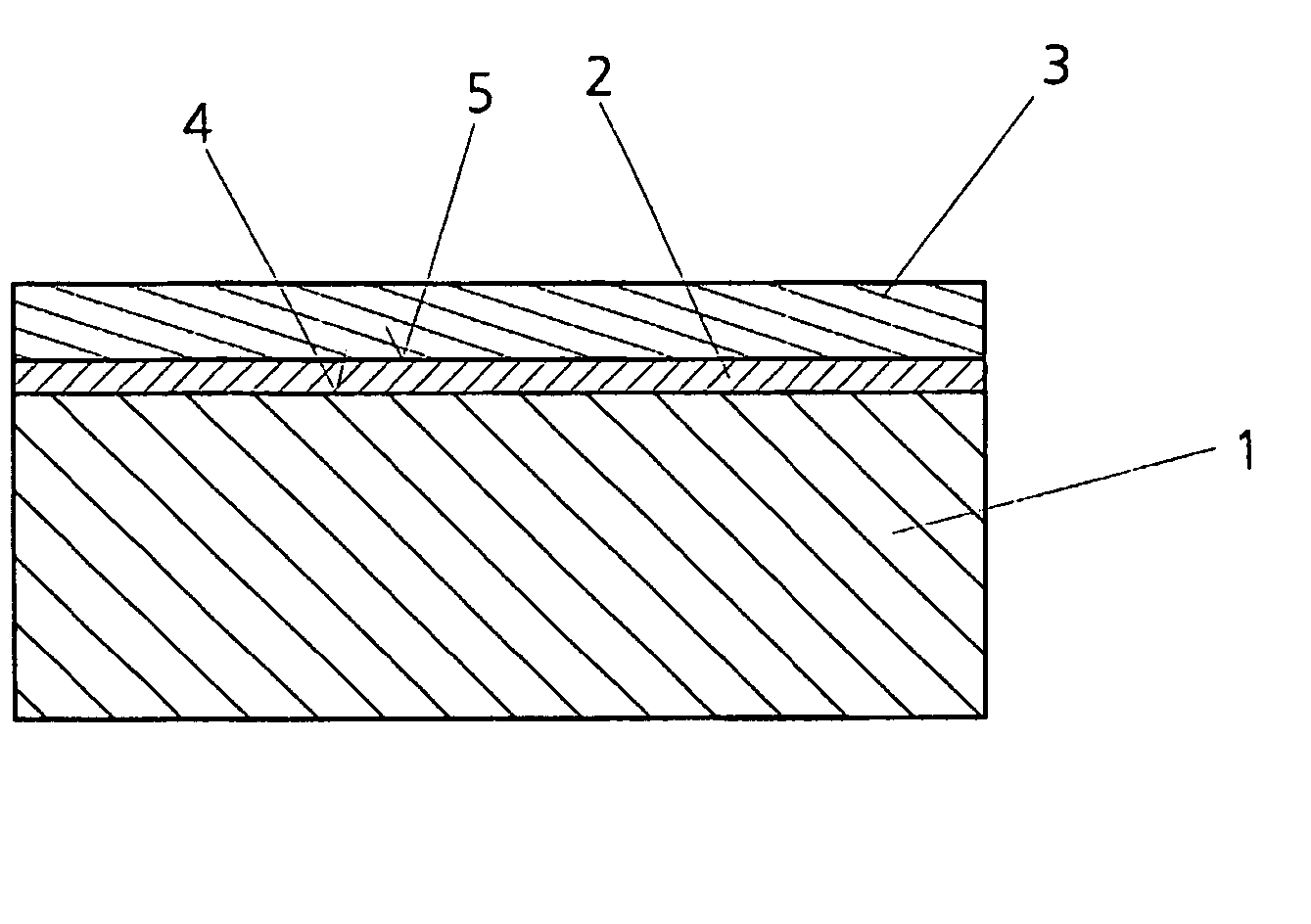Reflecting device for electromagnetic waves
a technology of electromagnetic waves and reflectors, which is applied in the direction of instruments, lighting and heating devices, photomechanical devices, etc., can solve the problems of impaired surface roughness achieved beforehand by superpolishing methods, and achieve the effect of improving surface quality with regard to hsfr and high reflectivity
- Summary
- Abstract
- Description
- Claims
- Application Information
AI Technical Summary
Benefits of technology
Problems solved by technology
Method used
Image
Examples
Embodiment Construction
[0027]In addition to these requirements with regard to the thermal expansion, the mirror carrier 1 must have, at its surface 4 which later carries the multilayer layer 3, very stringent requirements with regard to the figure, which is responsible for the imaging quality, with regard to the MSFR (mid spatial frequency roughness), which is responsible for scattering effects and contrast, and with regard to the HSFR (high spatial frequency roughness), which is responsible for the reflectivity. In order to be able to operate in the range of wavelengths below 200 nm, for example with X-ray waves in the range of λ=10–20 nm, for example the value of the HSFR must be significantly less than 0.5 nm rms, preferably 0.2 nm rms, particularly preferably 0.1 nm rms.
[0028]Conventional superpolishing methods are perfectly capable of obtaining such surface qualities with regard to HSFR. In the case of mirrors, in particular in the case of aspherical mirrors, the figure and longer-wave ranges of the ...
PUM
| Property | Measurement | Unit |
|---|---|---|
| wavelength range | aaaaa | aaaaa |
| thickness | aaaaa | aaaaa |
| thickness | aaaaa | aaaaa |
Abstract
Description
Claims
Application Information
 Login to View More
Login to View More - R&D
- Intellectual Property
- Life Sciences
- Materials
- Tech Scout
- Unparalleled Data Quality
- Higher Quality Content
- 60% Fewer Hallucinations
Browse by: Latest US Patents, China's latest patents, Technical Efficacy Thesaurus, Application Domain, Technology Topic, Popular Technical Reports.
© 2025 PatSnap. All rights reserved.Legal|Privacy policy|Modern Slavery Act Transparency Statement|Sitemap|About US| Contact US: help@patsnap.com


